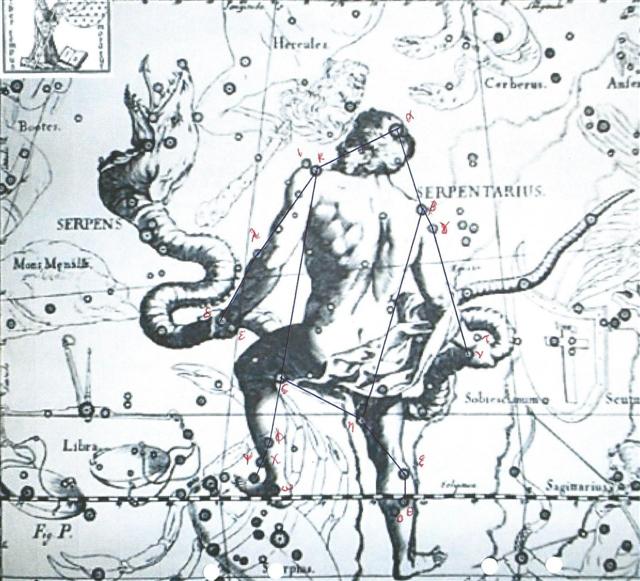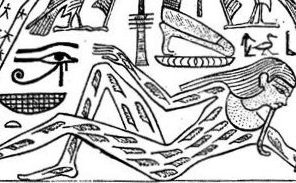'About the beginning of April' there were 3 dark days without fire and then the renewal of the heavenly fire took place 5-6 days after the winter solstice, as if this occurred immediately thereafter. We must try to understand this curious piece of information. ... In China, every year about the beginning of April, certain officials called Sz'hüen used of old to go about the country armed with wooden clappers. Their business was to summon the people and command them to put out every fire. This was the beginning of the season called Han-shih-tsieh, or 'eating of cold food'. For three days all household fires remained extinct as a preparation for the solemn renewal of the fire, which took place on the fifth or sixth day after the winter solstice. The ceremony was performed with great pomp by the same officials who procured the new fire from heaven by reflecting the sun's rays either from a metal mirror or from a crystal on dry moss. Fire thus obtained is called by the Chinese heavenly fire and its use is enjoined in sacrifices: whereas fire elicited by the friction of wood is termed by them earthly fire, and its use is prescribed for cooking and other domestic purposes ...
April 1 is day 91 counted from January 1 and December 21 is day 355:
If we should add 5 days to December 21 we would reach December 26 (360), and from there to the end of 3 dark days counted from April 1 there would be 5 + 90 + 3 = 98 days. In some way December 26 could have corresponded to April 4, or to a date slightly later in this month. 6 days added to December 21 will reach to December 27 (361 = 19 * 19) and if we should count April 4 as the preceding day assigned number 360, then we would have to reduce the Gregorian day number for April 4 from 459 (= 365 + 94) to 360, i.e. with 99 days. Or with 100 days if we would count a year as measuring 366 days. And there was a Hawaiian month Welo (Vero) 'about April':
... A vestige of the practice of putting the king to death at the end of a year's reign appears to have survived in the festival called Macahity, which used to be celebrated in Hawaii during the last month of the year. About a hundred years ago a Russian voyager described the custom as follows: 'The taboo Macahity is not unlike to our festival of Christmas. It continues a whole month, during which the people amuse themselves with dances, plays, and sham-fights of every kind. The king must open this festival wherever he is. On this occasion his majesty dresses himself in his richest cloak and helmet, and is paddled in a canoe along the shore, followed sometimes by many of his subjects. He embarks early, and must finish his excursion at sunrise. The strongest and most expert of the warriors is chosen to receive him on his landing. The warrior watches the canoe along the beach; and as soon as the king lands, and has thrown off his cloak, he darts his spear at him, from a distance of about thirty paces, and the king must either catch the spear in his hand, or suffer from it: there is no jesting in the business. Having caught it, he carries it under his arm, with the sharp end downwards, into the temple or heavoo. On his entrance, the assembled multitude begin their sham-fights, and immediately the air is obscured by clouds of spears, made for the occasion with blunted ends. Hamamea (the king) has been frequently advised to abolish this ridiculous ceremony, in which he risks his life every year; but to no effect. His answer always is, that he is as able to catch a spear as any one on the island is to throw it at him. During the Macahity, all punishments are remitted throughout the country; and no person can leave the place in which he commences these holidays, let the affair be ever so important ... If Jupiter corresponded to the eye - as the Chinese asserted - and if this eye was swallowed by Death-is-Near in day 357, then Jupiter ought to have been (re)born around day 357 - 398 (synodic cycle of Jupiter) = 365 + 357 - 398 = 324 (10 days after 314), i.e. in November 20, where indeed there is a tamaiti (little child) in the G text:
At this time of the year the summer Giant (Shu, Hercules, Al Gethi) was overturned and his spear-armed tanist - the Serpent (= Water) Holder - would take over:
... Hercules first appears in legend as a pastoral sacred king and, perhaps because shepherds welcome the birth of twin lambs, is a twin himself. His characteristics and history can be deduced from a mass of legends, folk-customs and megalithic monuments. He is the rain-maker of his tribe and a sort of human thunder-storm. Legends connect him with Libya and the Atlas Mountains; he may well have originated thereabouts in Palaeolithic times. The priests of Egyptian Thebes, who called him Shu, dated his origin as '17,000 years before the reign of King Amasis'. He carries an oak-club, because the oak provides his beasts and his people with mast and because it attracts lightning more than any other tree. His symbols are the acorn; the rock-dove, which nests in oaks as well as in clefts of rocks; the mistletoe, or Loranthus; and the serpent. All these are sexual emblems. The dove was sacred to the Love-goddess of Greece and Syria; the serpent was the most ancient of phallic totem-beasts; the cupped acorn stood for the glans penis in both Greek and Latin; the mistletoe was an all-heal and its names viscus (Latin) and ixias (Greek) are connected with vis and ischus (strength) - probably because of the spermal viscosity of its berries, sperm being the vehicle of life. This Hercules is male leader of all orgiastic rites and has twelve archer companions, including his spear-armed twin, who is his tanist or deputy ...
When Captain Cook was killed on Hawaii it was around one precessional day earlier than at the time of rongorongo. Furthermore, the Breaking of the Coconut was ideally at the Full Moon in the 12th lunar month (and not far from the right knee Cap of Hercules = Shu):
... The correspondence between the winter solstice and the kali'i rite of the Makahiki is arrived at as follows: ideally, the second ceremony of 'breaking the coconut', when the priests assemble at the temple to spot the rising of the Pleiades, coincides with the full moon (Hua tapu) of the twelfth lunar month (Welehu) ... Thus we can perceive a possible correspondence between the Breaking of the Coconut (Ç) and helical τ Herculis. And the Chinese wooden clappers (sticks) could have been a sign of the (temporary) death of Jupiter (alias Hercules, alias Lord Giver of Bread, etc):
|
||||||||||||||||||||||||||||||||||||||||||||||||||||||||||||||||||||||||||||||||||||||||||||||||||||||||||||||||||||||||||||||||||||||||||||||||||||||||||||||||||||||||||||||||||










